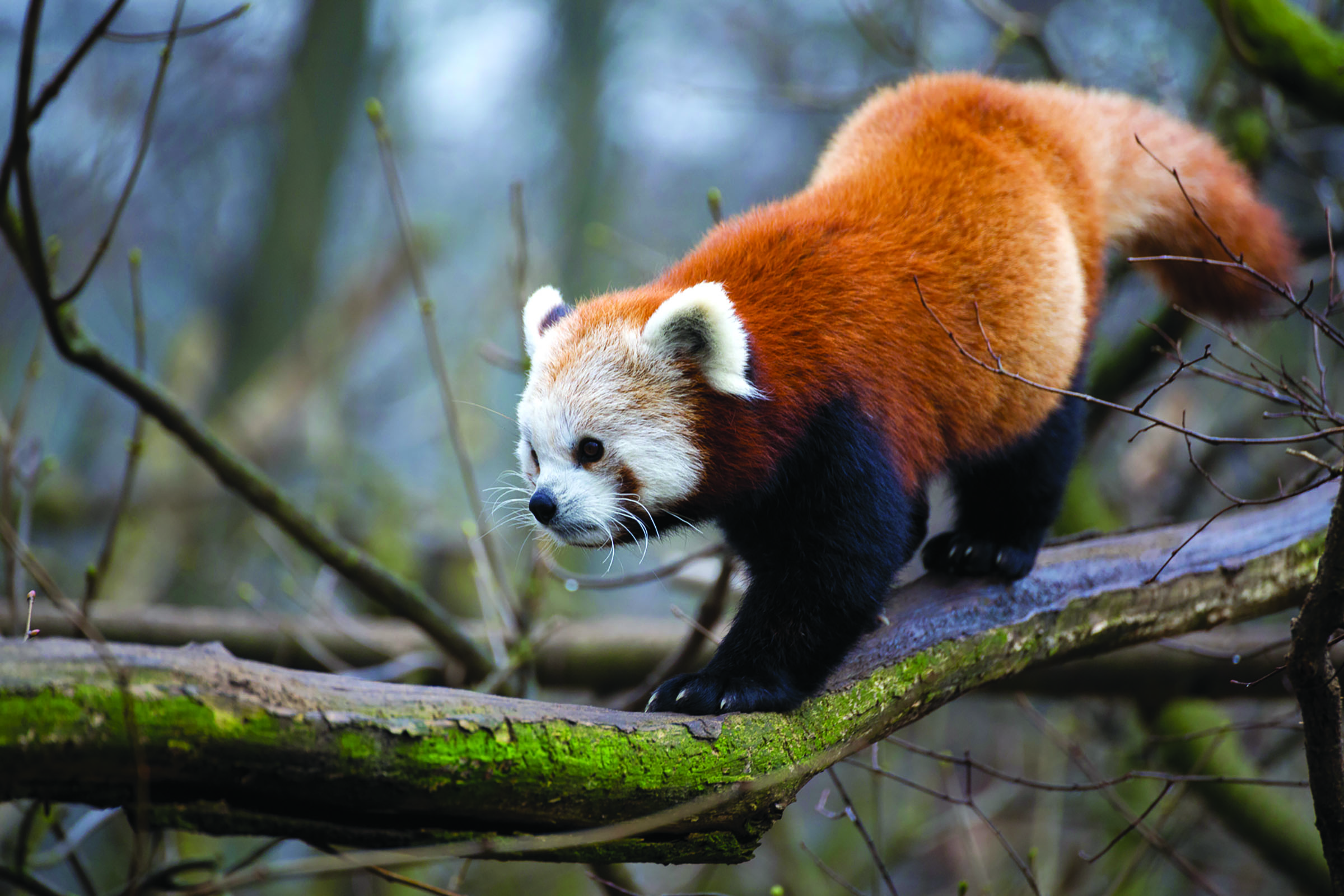RED PANDAS

Almost 200 years ago a French Zoologist named Federic Couvier discovered the red panda. He said it was the most beautiful animal he ever saw. The red panda is playful, athletic and endangered. It got its name from the copper color of its fur, and in recent years, has enchanted millions of people.
At first when you see a red panda you might think it looks more like a raccoon than a panda. It is about the size of a raccoon and has mask-like markings on its face. It looks absolutely nothing like the giant panda. A red panda is about the size of a house cat. About the only thing a red panda and the giant panda have in common is how their thumb is jointed so they can hold onto their food. After many years and tests, scientists have decided that the red panda is not related to any other animal on Earth. It is one of a kind.
Since the red panda lives in mountains and forests where it gets very cold in the winter, they have amazing fur coats. It is almost like they have two separate coats like some dog breeds. The outer layer of fur is called the guard coat. The layer that is closer to the skin is shorter, softer and thicker. This is called the undercoat. The undercoat has a very special job. It keeps the animal warm in the winter and helps keep them cool in the summer. The red panda’s beautiful fur is a small contributor to its endangerment. Poachers hunt and trap them for their fur.
The red panda comes from Asia. It lives in high mountains in China, India, Burma, Nepal and Tibet. It likes to hang out in trees and will climb to the highest branches to catch rays of sunshine. Being in the tops of the trees also helps the little animal avoid many of its predators. Using its tail for balance and its claws, the panda is a very good climber. Its favorite food is bamboo. It will eat other things like insects, small rodents and birds but would rather have bamboo. Loss of habitat from farming, ranching and road building have reduced the panda’s habitat by almost half.

With less than 10,000 known red pandas in the wild, efforts to save it have increased. Scientists have begun to teach local populations how to farm without having to move into the red panda’s territory. Laws against poaching have become stronger and rewards are offered to anyone turning a poacher in. Local replanting of bamboo forests is also taking place. With so many people working together, it is hoped that the population will begin to increase and the red panda can be saved.



